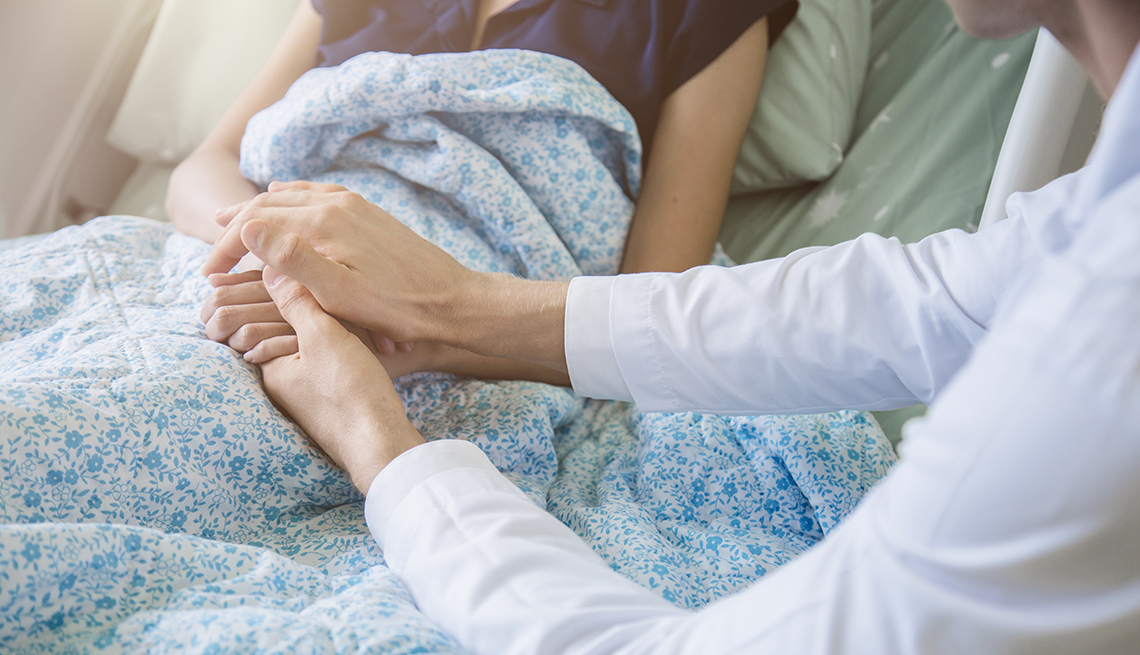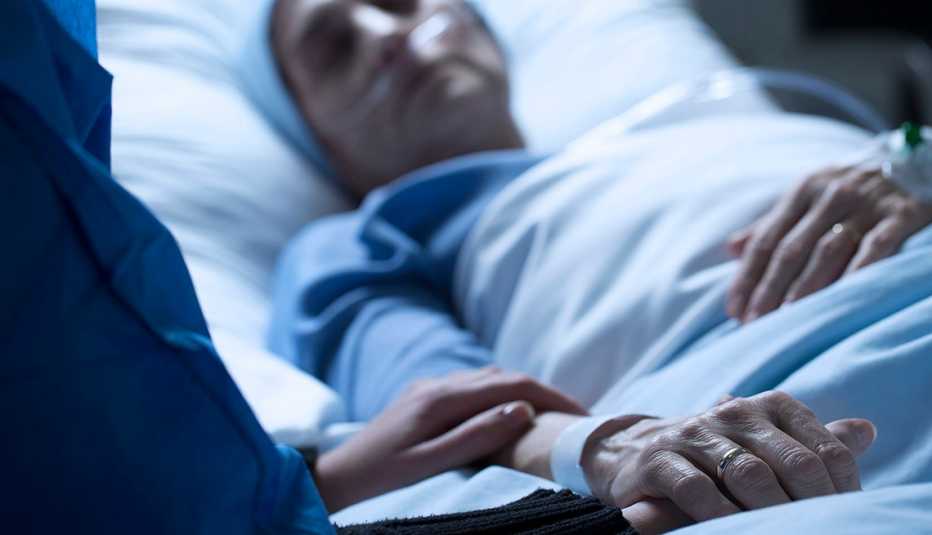AARP Hearing Center
Rachel Nania,
For the first time in more than half a century, more people are dying at home than in hospitals, according to a report published in the New England Journal of Medicine. And experts say the trend – fueled by the availability of hospice and a cultural movement to “reclaim” and “demedicalize” death – is expected to continue.
Between 2003 and 2017, the number of deaths in hospitals dropped from 39.7 percent to 29.8 percent. During that same time, home deaths increased from 23.8 percent to 30.7 percent. The percentage of deaths in hospice facilities also rose during the 14-year stretch.
Hospice delivers end-of-life care at home or in a facility through an interdisciplinary team of doctors, therapists and counselors who focus on a patient's comfort.
Study findings point to a need to improve patient and family support as health care responsibilities shift “from medical professionals to informal caregivers and loved ones,” says study coauthor Haider Warraich, especially as the population ages and the country braces for a “substantial rise” in the number of deaths over the next 30 years.
The study also points to a need to reexamine hospice enrollment and reimbursement requirements so that people with a terminal illness can get the medical and nonmedical services they need, adds Warraich, a cardiologist at Brigham and Women's Hospital and the VA Boston Healthcare System.
"I think this sets up the stage for thinking about, ‘What does hospice 2.0 look like?’ “ he says.
Choosing home over hospital
Dying at home isn't new. It was the norm until critical care technologies “that could keep us alive even after a heart stopped beating” were introduced in the 1960s, ‘70s and ‘80s, Warraich says.



































































